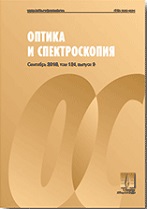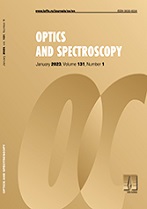|
This article is cited in 8 scientific papers (total in 8 papers)
Optics of low-dimensional structures, mesostructures, and metamaterials
Luminescent properties of hybrid nanostructures based on quantum dots of CdS, europium 1,3-diketonate, and methylene blue molecules
M. S. Smirnova, O. V. Ovchinnikova, I. V. Taidakovbcd, S. A. Ambrozevichbd, A. G. Vitukhnovskybde, A. I. Zvyagina, G. K. Uskova
a Voronezh State University, Voronezh, 394018, Russia
b Lebedev Physical Institute, Russian Academy of Sciences, Moscow, 119991, Russia
c Mendeleev University of Chemical Technology of Russia, Moscow, 125047, Russia
d Moscow Institute of Physics and Technology (State University), Dolgoprudnyi, 141701, Russia
e National Research Nuclear University MEPhI, Moscow, 115409, Russia
Abstract:
The luminescent properties of hybrid nanostructures constructed from colloidal quantum dots (QDs) of CdS passivated with thioglycolic acid, europium(III) tris(tenoyltrifluoroacetonate), and methylene blue dye molecules are studied. Spectral features typical for the formation of core/shell QDs of the CdS/CdS:Eu$^{3+}$ type are found. It is noted that the adsorption of the europium complex at the QD interfaces and the formation of QDs of the CdS/TGA/Eu$^{3+}$ are probable. Spectral patterns that reveal nonradiative energy transfer from the recombination luminescence centers of CdS QDs to the Eu$^{3+}$ ions in the CdS/CdS:Eu$^{3+}$ and CdS/TGA/Eu$^{3+}$ structures are obtained. This is manifested in quenching the recombination luminescence of QDs and in the ignition of the intracentric luminescence of Eu$^{3+}$, which enhance with an increase in the concentration of the europium complex. When such structures are combined with methylene blue molecules, the half-width of the absorption spectra is found to increase by 10–15% with an unchanged position of the absorption band maximum. With an increase in the concentration of methylene blue molecules, decreases in the intensity of the recombination luminescence band of CdS QDs at a wavelength of 530 nm and in the luminescence intensity of Eu$^{3+}$ ions and simultaneously the rise up of the fluorescence of methylene blue at a wavelength of about 675 nm are observed. At the same time, a decrease in the luminescence lifetime of the bands of QDs and europium ions are observed. It is concluded that the nonradiative excitation energy transfer from both the recombination luminescence centers and Eu$^{3+}$ ions to methylene blue molecules takes place.
Received: 02.03.2018
Citation:
M. S. Smirnov, O. V. Ovchinnikov, I. V. Taidakov, S. A. Ambrozevich, A. G. Vitukhnovsky, A. I. Zvyagin, G. K. Uskov, “Luminescent properties of hybrid nanostructures based on quantum dots of CdS, europium 1,3-diketonate, and methylene blue molecules”, Optics and Spectroscopy, 125:2 (2018), 240–246; Optics and Spectroscopy, 125:2 (2018), 249–255
Linking options:
https://www.mathnet.ru/eng/os938 https://www.mathnet.ru/eng/os/v125/i2/p240
|


| Statistics & downloads: |
| Abstract page: | 56 | | Full-text PDF : | 28 |
|



 Contact us:
Contact us: Terms of Use
Terms of Use
 Registration to the website
Registration to the website Logotypes
Logotypes